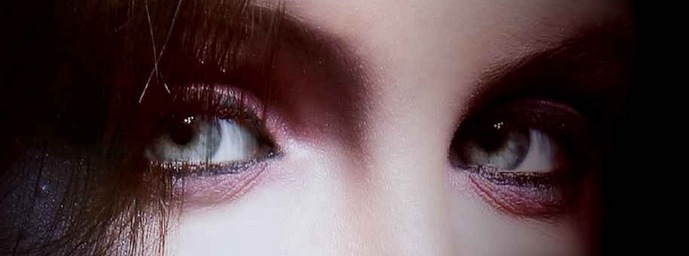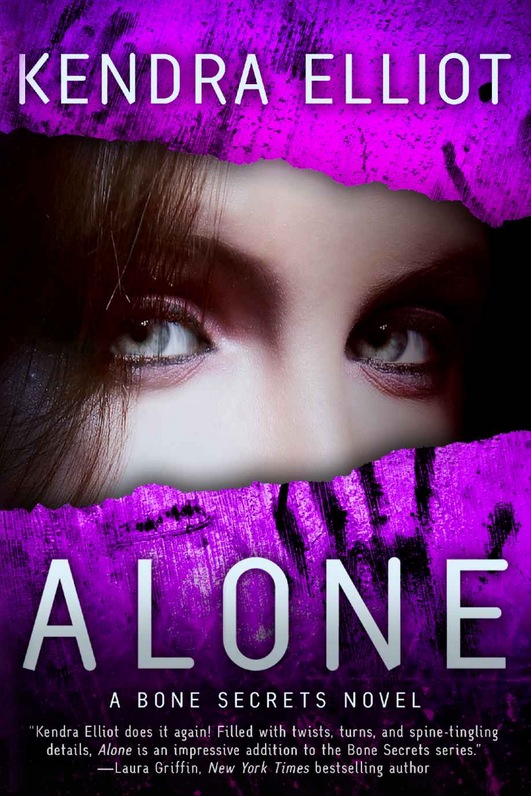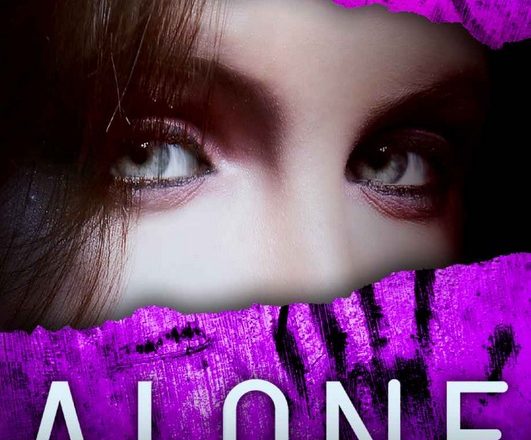Trinity sat in the waiting room at the medical examiner’s office and tried to make herself disappear. She hunched over her clipboard, glancing occasionally at the growing number of people milling about the room, avoiding eye contact. No one asked her any questions. The growing crowd was mostly adults, and each one or couple had a clipboard with the questionnaire.
The room was tense. Some parents cried, others spoke in hushed tones, and more simply stared into space, their hands in a death grip or clenching a spouse’s hand. Cell phone screens were constantly checked and calls made. Trinity’s questionnaire about Brooke was finished, but she hadn’t turned it in. As long as she didn’t hand in the form, Brooke wasn’t confirmed as dead. She clung to the clipboard, her fingers icy and her feet numb.
Ever since she’d seen the news on TV, she’d felt like she couldn’t get enough oxygen. Her brain was locked away, protected from thinking deeply. A door slammed in her mind if she started to consider Brooke’s fate. She’d floated, barely functioning on half power since speaking with Dr. Peres.
In her heart, she knew something was wrong.
Brooke always returned texts.
Trinity read the questionnaire for the hundredth time.
Age
Hair color and length
Eye color
Height
Estimated weight
Any unusual scars, birthmarks? Braces or tattoos?
Clothing last seen wearing
Brooke didn’t have braces or tattoos. Trinity didn’t know about any scars. The form was so sterile. It didn’t allow her to describe Brooke’s beauty or laugh. Or explain what a good friend she’d been . . . was. She’d filled in answers that were short and cold. Brooke’s sunny smile flooded her brain, and she immediately shut the image down.
Don’t think about her.
The parents in the room had filled out their forms as quickly as possible and given them to Anita. Some had demanded to view the girls’ bodies and were deftly turned away. Others sat silently in the chairs, staring at their cell phones, sending texts, and waiting. Trinity counted nine tissue boxes in the room. All were getting regular use “Oh, thank God!” shrieked a woman staring at her phone. She and her husband leaped up, and she fell into his arms, her shoulders shuddering. He hugged her hard, his head buried in her neck. Pulling apart, they stumbled across the room to Anita’s desk, tears spilling down their cheeks.
“My daughter just texted me back. She was at her boyfriend’s instead of where she’d told us she was spending the night.” The woman’s voice cracked as Anita dug through the questionnaires and pulled one out.
“I’ll shred this,” Anita said to the mother.
“No, I want it,” the mother said grimly, holding out her hand. “I want to show her what we went through because of her lies. Maybe she’ll learn something.”
Anita nodded and handed her the form. The couple headed out the door and all of the other parents watched them through the large windows. Halfway across the parking lot, the mother stopped and turned to her husband. She collapsed against him, her legs visibly shaking. They embraced in the lot, leaning heavily on each other.
The other parents looked away.
Trinity trembled. She wondered if her foster mom was on her way. She’d gone to church, leaving Trinity home with her upset stomach. Katy knew Trinity was with Dr. Peres at the ME’s office and had promised she’d arrive as soon as she could. How long would she have to wait? Dr. Peres had said the police wanted to talk with her.
She walked to Anita’s desk and quietly laid down the clipboard. The woman gave her a kind smile as she pulled Trinity’s form from the board and added it to her stack. “How are you doing, hon?” The woman had a grandmotherly quality that made Trinity want to curl up in her lap.
Trinity forced a smile, feeling her dry lips stretch. “Fine, thank you. Do you know when the police will talk to me?”
Anita’s brows came together. “Let me check with Dr. Peres.” She glanced at her watch. “Have a seat—”
“Trinity?” A blonde woman in scrubs stepped into the waiting room. “I’m Dr. Campbell. Dr. Peres asked me to get you.”
The woman was smaller than Trinity. And she was a doctor? Was she a real doctor or one like Dr. Peres, who studied bones?
Trinity followed the woman out of the waiting room and into the bright hallway.
“One of your friends is missing?” the doctor asked as they moved rapidly down the hall.
Trinity forced her legs to move. A fuzzy cloud still enveloped her senses, requiring extra effort to walk and focus. “I knew she was going to Forest Park yesterday. And now I can’t reach her.”
Sadness crossed the young doctor’s face. “So many girls.”
“Have you seen them?” Trinity whispered.
Dr. Campbell halted and turned to face her. “I have,” she answered. “And I’ll never forget it.” Her wide brown eyes were soft with sympathy.
“Are you a doctor like Dr. Peres is a doctor? Or a real doctor?” Trinity blurted.
The woman smiled. “I’m a dentist. I work for the medical examiner as a forensic odontologist. I study their teeth to help identify people.”
“So you looked at the fillings and stuff on those girls? And you’ll compare them to what their parents and dentists say they had done to their teeth?”
“Exactly.”
Trinity tried to remember Brooke’s teeth. She couldn’t remember anything obvious. They were white and straight like most people’s teeth these days. Except her own. Her lower teeth were a little bit crooked, but her foster mom said it wasn’t noticeable and that Trinity was lucky to have such good genes she hadn’t needed braces. Which was extra-lucky because as a foster kid, dental care was scarce
“You’ve already looked at all their teeth? Brooke had perfect teeth . . . in the front, anyway. I don’t know if she had any fillings on her back teeth.”
Dr. Campbell nodded. “I’ve looked at four of them so far. For the most part, they have great teeth. What I’d expect to see on healthy, middle-class teen girls.” She didn’t volunteer any more information.
Trinity slipped her cell phone out of her back pocket. Would the doctor look at a picture of Brooke? “Umm . . . would you . . . ”
Dr. Campbell placed a hand on her arm, stopping her, her eyes sad. “You can show your pictures to the police, okay? We’ll let them figure it out by the evidence, not by me guessing from a picture.”
Heart sinking, Trinity dropped her gaze and shoved the phone in her jeans. The doctor was right. She didn’t want to hear it might be Brooke; she wanted to know the truth.
“Brooke wouldn’t kill herself,” she said quietly. “They’re saying on the news it could be suicide. I know her. She was looking forward to the homecoming dance next week. She had her dress and everything.”
Dr. Campbell pressed her lips together. “The reporters are speculating. Don’t listen to them. They don’t know what happened and they’re simply saying what will get the most attention on TV. The police and the medical examiner are the only ones you should listen to.”
Trinity looked into her earnest brown eyes and nodded. Dr. Campbell was deadly serious.
“Victoria asked me to bring you to her. The police aren’t ready to talk to you, and she was worried about you sitting alone out there. She has a project you can help her with.”
“Ah . . . okay.” Trinity had no idea how she could be helpful. Maybe the doctor needed some filing done. Or maybe Dr. Peres was simply trying to keep her distracted. She followed Dr. Campbell through a maze of hallways and into a large room that looked like a lab. But this lab had bones. Lots of them. There were three small metal tables, each with a skull and a shallow bin of bones. Dr. Peres was taking bones out of one bin and organizing them on a table.
Sweat sprouted on her temples and Trinity’s vision tunneled. Foggily she felt Dr. Campbell grab her arm and push her into a chair. She shoved Trinity’s head between her knees. “Take deep breaths.”
“Didn’t you tell her what we’d be doing?” Dr. Peres asked, concern filling her voice. Her feet moved into Trinity’s view and she squatted next to her, her hand on Trinity’s shoulder.
“No. I thought I’d let you do that. I didn’t know you’d already have the skulls out on the tables when we came in,” answered Dr. Campbell.
“Are those . . . are those . . . ” Trinity’s mouth was too dry to form the words. She stared at the floor as it moved in and out of focus.
“They’re real, if that’s what you’re asking,” said Dr. Peres.
Trinity closed her eyes. How had they removed the flesh so fast?
“Oh, honey!” Dr. Campbell kneeled and tried to look Trinity in the eye. “These aren’t the girls! These are some old skeletons. Dr. Peres thought you might like to help lay them out. She said you were interested in anthropology. I should have warned you!”
Trinity exhaled. Of course. They wouldn’t have cleaned the bones already. “I’d like to help . . . I think.” She lifted her head carefully, expecting to see black shadows rushing her vision again. All seemed clear. Both doctors examined her with concern.
“Maybe another time,” Dr. Peres said. She took stock of Trinity’s face and frowned. “I can find you a magazine and let you know when the police are ready to talk to you.”
“No, really. I’m fine. It was just a shock. Those girls have been on my mind for hours and to step in and see . . . ” Trinity scanned the room again and tried to get a grip on her breathing. She could do this. A distraction would be good. One of the skulls faced her, appearing eerie without its jaw and lower teeth. Could she handle touching the bones? It couldn’t be much different than the plastic skeleton in her anatomy class. She was interested to see if she could fit the pieces together. It’d be like a giant puzzle.
“Who are they?” she asked.
Dr. Peres turned to study the tables. “Women. They were found in Forest Park several decades ago. In a similar position to how the girls were found last night.”
“What?” It’d happened twice?
“There were six, just like last night. But with these women no one ever figured out who three of them were,” answered Dr. Peres.
“How can that happen? How can no one be looking for them?” Shock roiled through her, and her personal fog cloud vanished.
Dr. Campbell spoke up. “I suspect someone, somewhere missed them. I don’t know if back then they were able to get the word out well enough. They didn’t have the immediateness of the Internet to inform the world. I wonder if the story ever went beyond the Northwest.”
Trinity looked at the skulls in a new light. Had families been wondering for years what happened? “You have to figure it out. You have to let their families know,” she said to Dr. Peres. “How old are they?”
“They were young women. Late teens or early twenties.”
Alarm raced up Trinity’s spine. “What do the police think?”
Dr. Campbell gave a sad smile. “I don’t know what they think, yet. Dr. Peres is going to assess the remains and see if she can find any indicators for who these women were.”
The importance of Dr. Peres’s responsibility rendered Trinity speechless. What was it like to have such an important job? She studied the tall woman. The doctor didn’t look stressed or upset. She looked ready to get to work. Trinity’s budding desire to be a fashion designer suddenly seemed trite.
“Why, Victoria,” said Dr. Campbell. “From the expression on Trinity’s face, I’d say we have a future forensic anthropologist on our hands.”
Dr. Peres pulled her gaze away from the closest skull and studied Trinity. Her eyes were warm and a rare smile curved her lips. “It’s not a job for everyone.” She tilted her head as she considered Trinity’s face. “But I think you might do.”
A new path to her future rolled out in front of Trinity.








